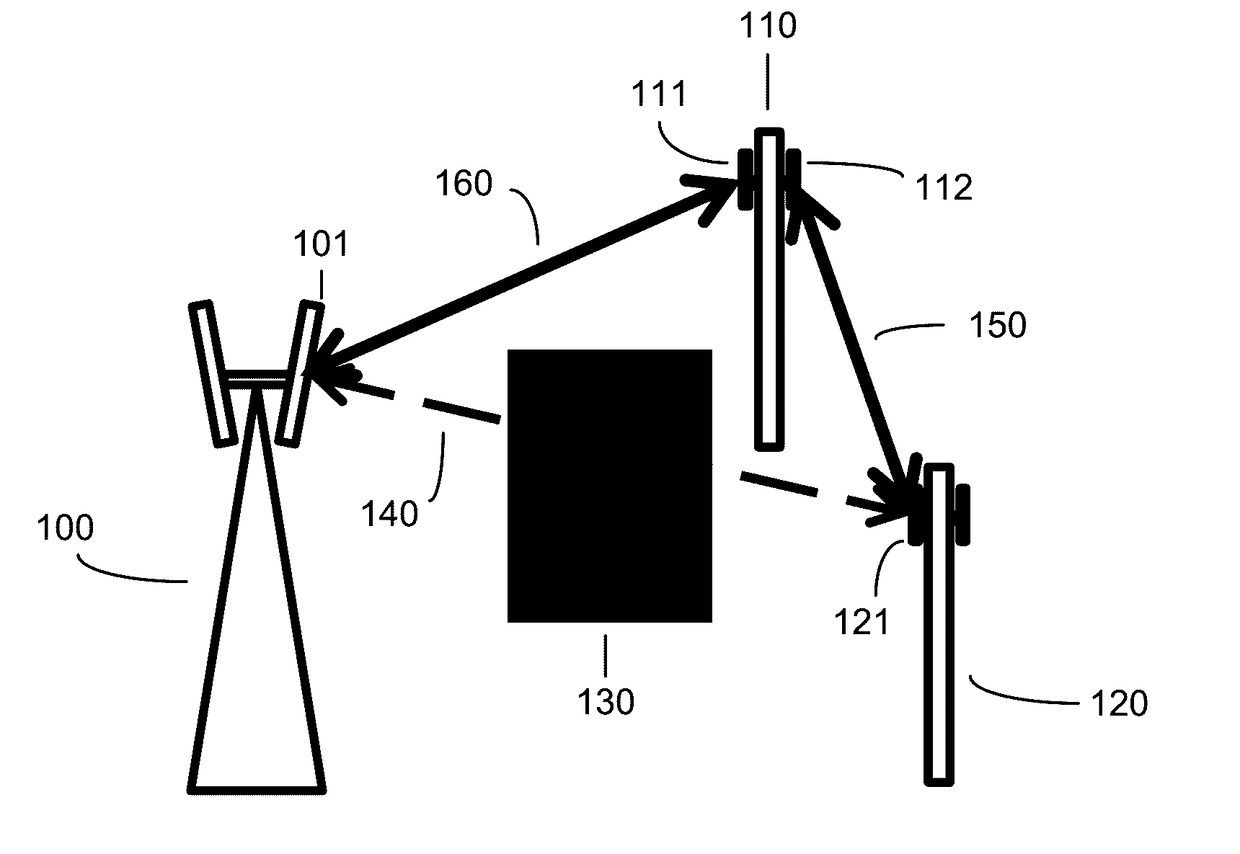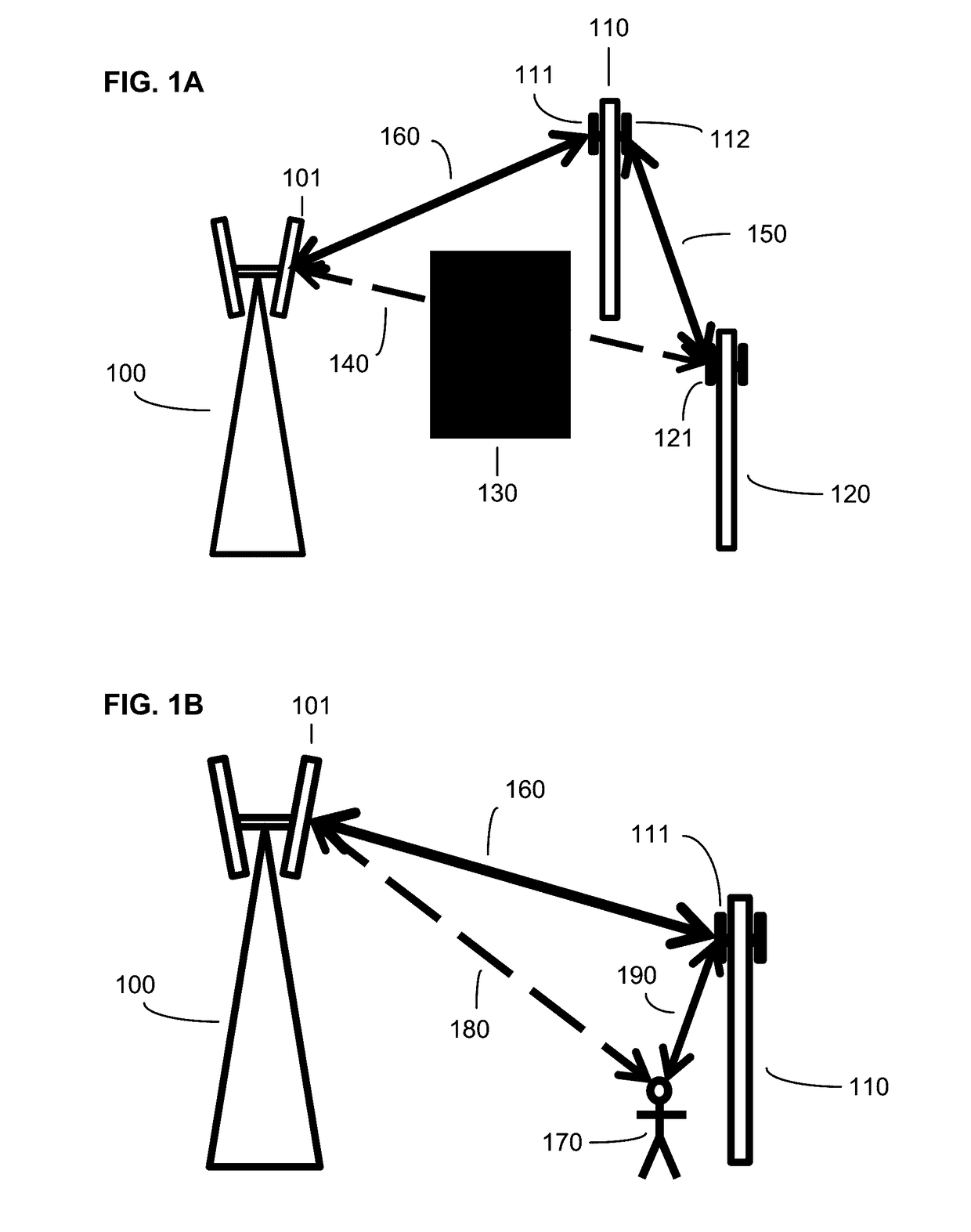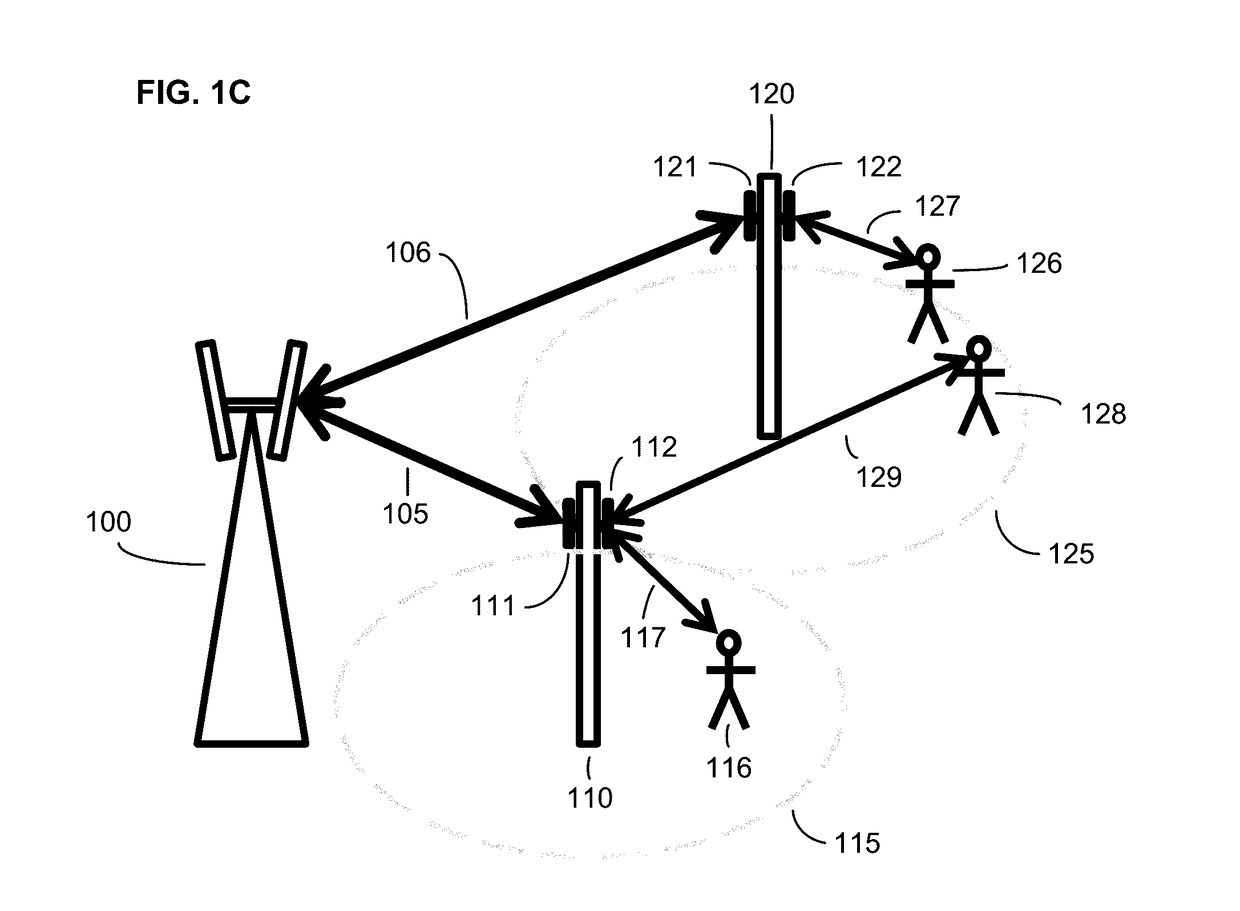Methods and systems for communication with beamforming antennas
a beamforming antenna and communication method technology, applied in the direction of radio transmission, electrical equipment, assess restriction, etc., can solve the problems of preventing similar antenna systems from operating simultaneously at the same frequency, high energy cost per bit transmitted, expensive and bulky, etc., to increase network capacity, reduce power consumption, and increase data rate
- Summary
- Abstract
- Description
- Claims
- Application Information
AI Technical Summary
Benefits of technology
Problems solved by technology
Method used
Image
Examples
Embodiment Construction
[0031]In the following detailed description, reference is made to the accompanying drawings, which form a part hereof. In the drawings, similar symbols typically identify similar components, unless context dictates otherwise. The illustrative embodiments described in the detailed description, drawings, and claims are not meant to be limiting. Other embodiments may be utilized, and other changes may be made, without departing from the spirit or scope of the subject matter presented here.
[0032]With reference to FIG. 1A, an illustrative scenario is depicted for adaptive routing within a communications network. The illustrative network includes three nodes 100, 110, and 120. The node 100 is depicted as a macro cell node and the nodes 110 and 120 are depicted as small cell nodes, but this depiction is not intended to be limiting; in various embodiments, each of the various nodes can be selected from a list of node types that includes macro cell nodes, small cell nodes (including nano, pi...
PUM
 Login to View More
Login to View More Abstract
Description
Claims
Application Information
 Login to View More
Login to View More - R&D
- Intellectual Property
- Life Sciences
- Materials
- Tech Scout
- Unparalleled Data Quality
- Higher Quality Content
- 60% Fewer Hallucinations
Browse by: Latest US Patents, China's latest patents, Technical Efficacy Thesaurus, Application Domain, Technology Topic, Popular Technical Reports.
© 2025 PatSnap. All rights reserved.Legal|Privacy policy|Modern Slavery Act Transparency Statement|Sitemap|About US| Contact US: help@patsnap.com



